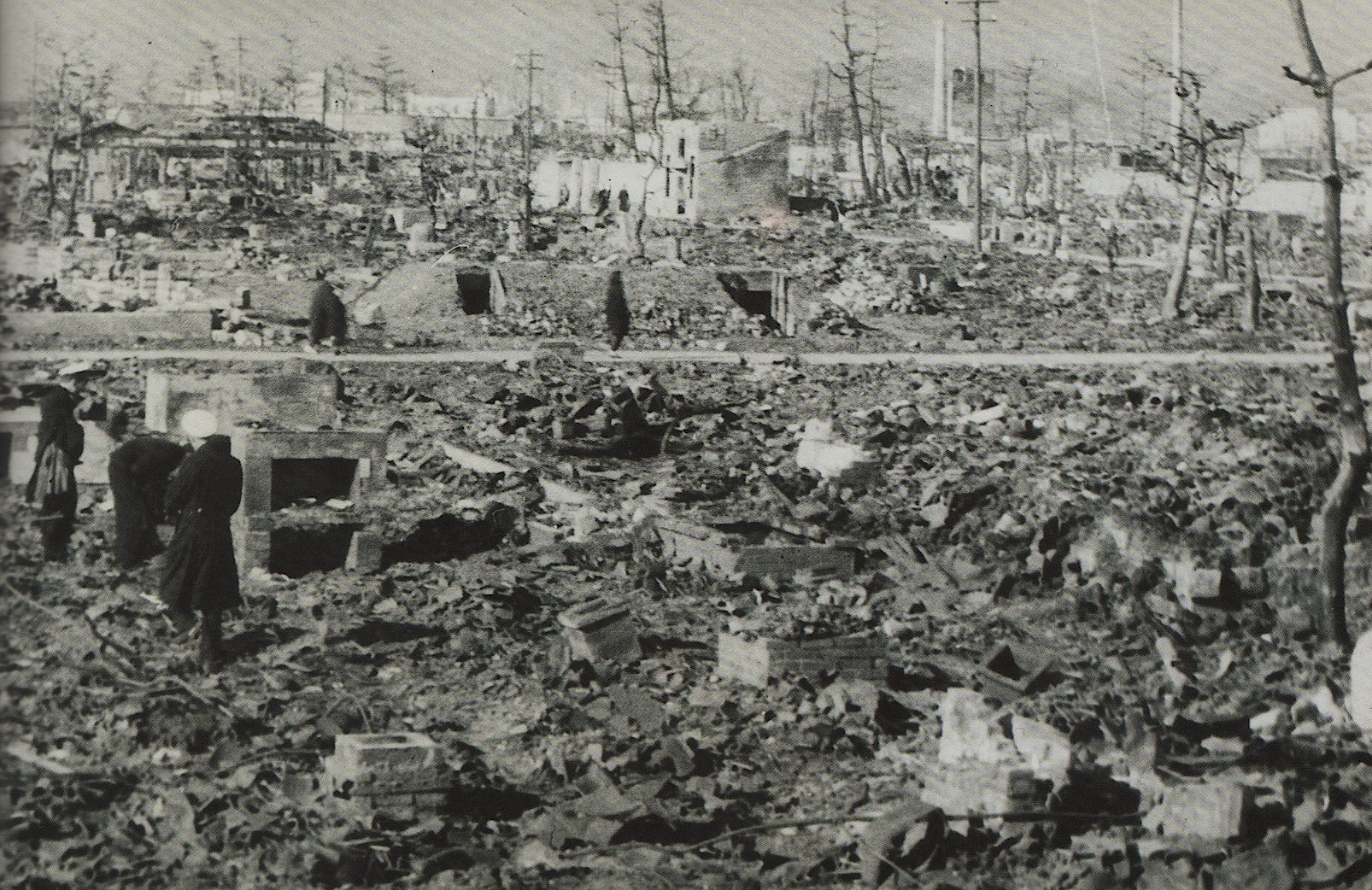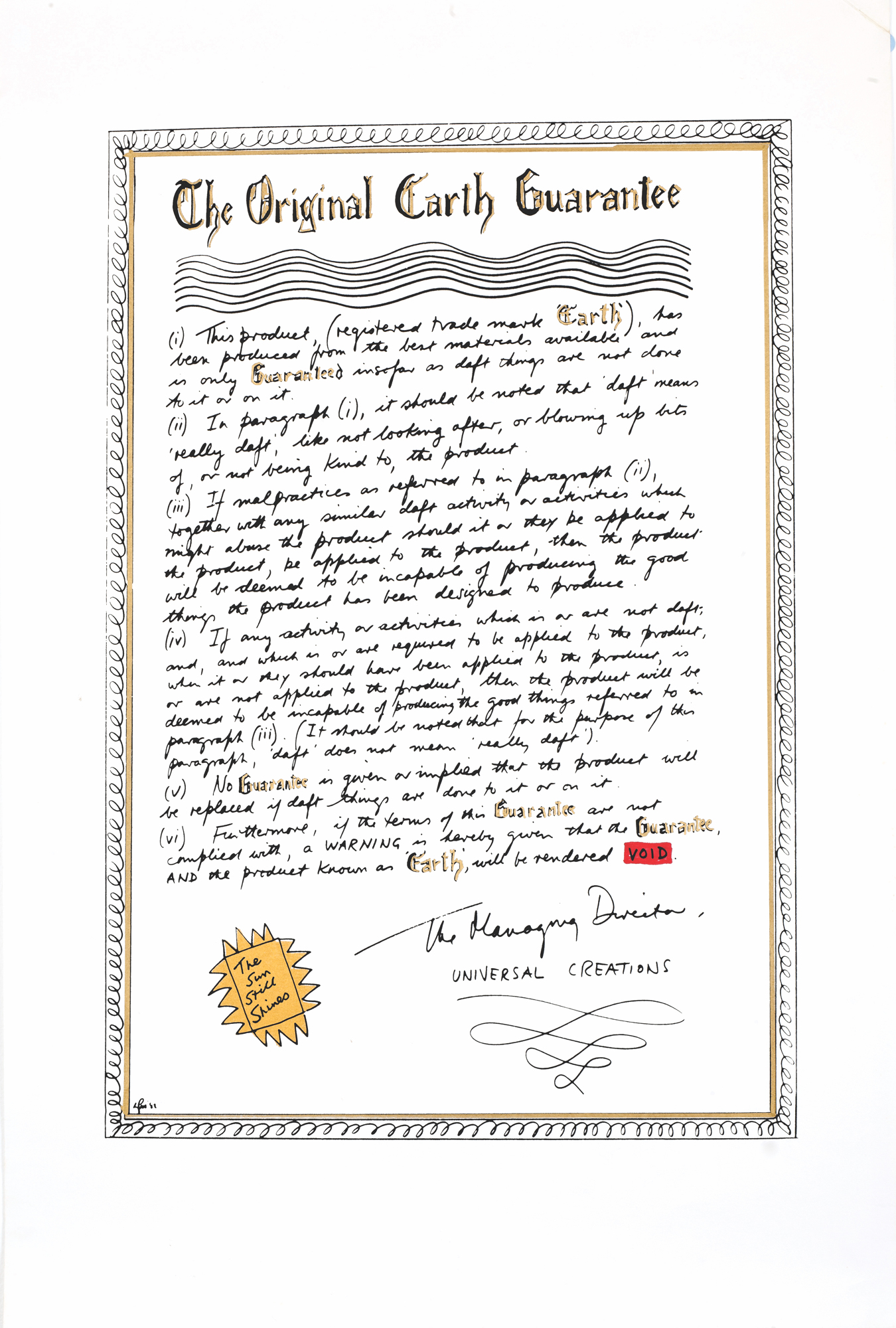George Wyllie entered the Royal Navy at 20 years old, in the midst of World War II.
Almost two years after signing up, George ventured out to sea on the HMS Argonaut joining the forces for the Normandy Landings. HMS Argonaut provided support for the entire period of the Normandy mission. After supporting invasions at Cannes, the HMS Argonaut made its way to Italy and sailed around the Mediterranean then to the Aegean Sea to assist the liberation in Greece (the place that which later inspired his work A Day Down A Goldmine, 1982).
In November the Argonaut was ordered to set sail for Ceylon to join the British Pacific Fleet, then to Australia, while frequently being attacked by and attacking the Japanese on this two-year journey. George was in the Philippines when the war in Europe came to an end.

In 1945, on the 6 August, the US bomber Enola Gay deployed an atomic bomb above Hiroshima, Japan. US President Harry S. Truman gave the order to drop the bomb.
With a “blinding flash and violent blast” the attack, estimated to have destroyed 4.7 square miles of the city, killed or injured 135,000 people. Japan did not immediately surrender, resulting in a second atomic bomb being dropped on Nagasaki on 9 August, causing casualties of 150,000 people. The formal surrender document of Japan was submitted to the Allied powers on 15 August, 1945.
The HMS Argonaut arrived at Japan in late January, 1946. The Argonaut was the first British ship to sail into Yokohama harbour.
During this visit, George was offered the chance to see Hiroshima. He was among a small group of three officers who traveled by train to explore the devastated streets of the city. While he walked among the shattered stone, rubble and chaos, George observed remaining residents of the city scarred and shell shocked. Deeply impacted by his harrowing experience, it stayed with him, and later in life manifested in his art.
World War II was over. Wyllie returned home on 30th April 1946.

A photograph of Hiroshima taken by George Wyllie.
Our ship was in the northern Pacific when the news of the bombing of Hiroshima came over the radio. We welcomed this, for we knew it meant the end of the war.
About two months later I visited Hiroshima with some shipmates. We wandered among the ruins and I took a photograph. I had seen other places destroyed by bombs, and was therefore inclined to measure the devastation of Hiroshima against this. At that time the idea of being ‘anti-nuclear’ did not exist. Radiation did not occur to us, nor were we warned. Such was our innocence, ignorance, and stupidity. We wandered amongst the exposed grid of the streets, rubbed heat pulverised granite through our fingers, collected globules of molten glass and saw charred tree trunks everywhere. Scarred children played quietly. We grovelled a few souvenirs then left by a train, for Yokohama.
On our ship we were never very keen on the Japs. They were a dangerous and unpleasant enemy and we were glad to see them defeated. We used a very clever bomb to do this, and it – like the Japs, caused a lot of suffering. In the light of this experience – that should have been the end of it. But like simple sailors confronted by awesome immensity too consequential to grasp, we cut loose the thought as though to let it drift from memory. Others, stupid enough to believe they can understand, believe that they do.
The absurdity, the horror, and the DIFFERENCE of Hiroshima is, that for the first time ever, the evolution and eternity of this planet, its human race, and the culmination of all energies which is fertility, can be converted by a touch on an idiot switch, to sterility.
– GW 1986
Long before the term ‘climate change’ had even been thought of, visionary Wyllie created his Original Earth Guarantee in 1982. The print mimics an official legal document but also warns about the future of the planet.
The last line, reading:
‘…if the terms of this Guarantee are not complied with, a WARNING is hereby given that the Guarantee, AND the product known as ‘Earth’, will be rendered VOID’.
The George Wyllie Grove
Created to mark the artist’s centenary year in 2021.
Bring some much-needed equilibrium to our planet by planting a tree in memory of George.
This project is possible thanks to Trees For Life and trees can be donated via this link to their website.

Trees for Life vision is a revitalised wild forest in the Scottish Highlands, providing space for wildlife to flourish and communities to thrive. They are enabling the restoration of the globally unique Caledonian Forest, which once covered much of Scotland.
Scots pines and a beautiful selection of other trees like oak, hazel, alder, birch, rowan, and aspen and woodland plants, stretching from the Atlantic fringe of the West Coast to the Great Glen and beyond. Supporting an abundance of wildlife, some found nowhere else in Britain. This is the Caledonian Forest that Trees for Life envisions for Scotland.

